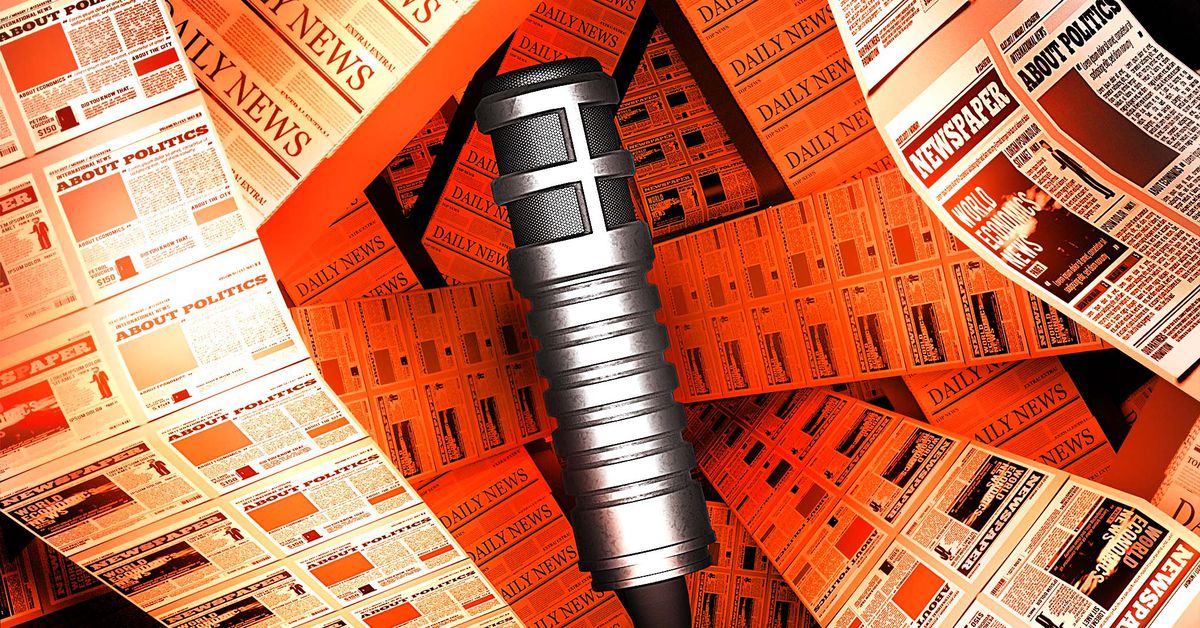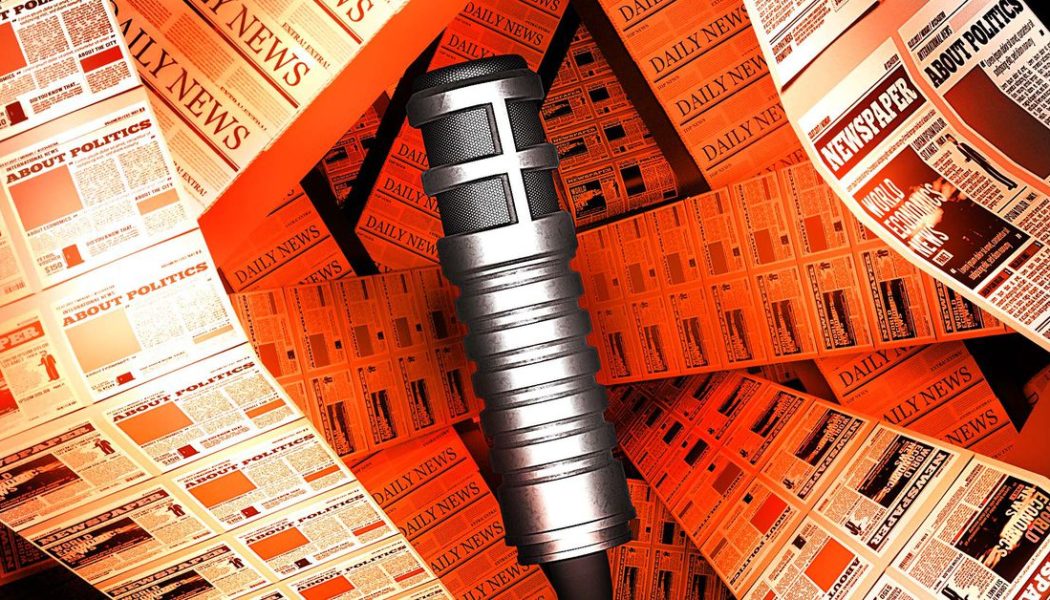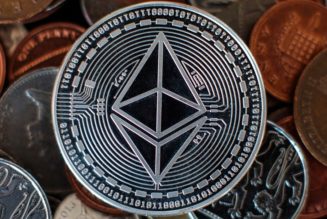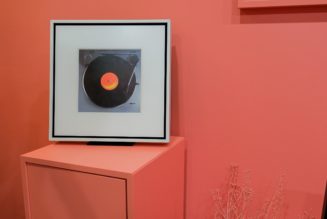
The Chicago Sun-Times needs help. After being bought and sold several times over the last decade, the 73-year-old paper is looking for a more stable home to continue its award-winning reporting — and it may have finally found it in an unexpected place: a radio station.
Chicago Public Media, which owns the radio station WBEZ, is currently in talks with the Sun-Times to merge. A final deal would combine their newsrooms and audiences in hopes of creating a financially stable enterprise for both teams. Similar mergers and acquisitions have become a common way to bolster the struggling print industry, but if radio were to take on a major newspaper, that would be a first.
“Audio is a growth business,” says Jim Friedlich, chief executive of The Lenfest Institute for Journalism, who advised CPM on the potential merger. “Now Chicago Public Media and other media with audio roots have both the wherewithal and the self-confidence to take a bold step like this.”
Since 2004, US newspapers have shut down at a rate of 100 per year, a pace that’s only accelerated since the start of the pandemic. To stay afloat, some smaller newsrooms have given up independence, being bought by news conglomerates or becoming joint entities with other local outlets — and public radio and TV stations have increasingly offered themselves up as partners. New York Public Radio acquiring the website Gothamist was one of nine similar deals in recent years, triggering researchers to document the trend by creating the Public Media Mergers Project. Public radio has been a particularly strong force, holding its ground amid digitization and the podcasting craze (partially because it’s participated in it), and it might be strong enough to help print do the same thing.
WBEZ may be particularly well suited to supporting the Sun-Times. The station is a big name, pulling in 550,000 weekly broadcast listeners, according to CEO Matt Moog, while also being the audio house that brought us Wait Wait… Don’t Tell Me! and This American Life. Moog tells me the organization has been “breakeven or better for the past seven years, even through the pandemic.”
Part of the financial health of public media stations in general involves the financial perks of being a nonprofit. Listeners and viewers are incentivized to donate since contributions are tax-deductible, and the organizations are exempt from corporate income taxes (as well as sales and property taxes, in some cases). They can apply for grants reserved for nonprofits while reserving the right to pull at heartstrings — and wallets — by saying their programming is funded by “viewers like you.” In addition to more than a dozen or so public-media mergers in the past decade, there have also been cases of newspapers converting to or becoming affiliated with a nonprofit without the support of NPR or PBS affiliates in order to access these exact benefits.
Newspaper closures, on the other hand, have been attributed to fewer paid subscriptions, as consumers flock to free sites and social media, and the resulting disinterest of advertisers. Between 2008 and 2018, it’s estimated that advertising revenue for newspapers dropped by 68%, even as digital advertising revenue increased for those same publications. What’s more, certain types of local reporting — public-service and investigative journalism in particular — are often the most expensive, says Friedlich. Many local public-service stories involve “long lead times” and “deep investigations,” he says, as well as steps that are relevant to a story’s locale, like doing environmental testing or submitting freedom of information requests to local government.
When donations are incentivized by nonprofit status, they can help cover those costs. In 2016, The Lenfest Institute, a nonprofit, acquired the Philadelphia Inquirer newspaper, making contributions tax-deductible if they’re made to the institute to support the Inquirer. Under this arrangement, Friedlich says, the resulting donor support has comprised “a critical 5 percent” of the paper’s annual revenue, being used for “meaningful initiatives in digital transformation, investigative news, and diversity, equity and inclusion.”
Public radio has taken the already powerful funding strategy of nonprofits and made it its own. Stations across the US have established a reputation that they will ask for — and receive — donations from listeners, and it’s also commonplace to hear that a “generous donor” agreed to match fundraiser contributions or that a certain program was “sponsored” by a local business. Strong public radio stations “have built out sophisticated developments and business-side teams,” says Elizabeth Hansen-Shapiro, lead researcher for the Public Media Mergers Project and CEO of the National Trust for Local News. “They have a really strong basis of financial support, in terms of major gifts and membership and sponsorship. The business model itself is pretty robust and diversified.”
This may be how CPM and the Sun-Times could stand to succeed. Though exact plans are still in flux as CPM and the Sun-Times iron out the formal deal, they’re said to take several cues from what public radio already does well. For one, Moog says, he intends to apply public radio’s financial infrastructure to the Sun-Times existing efforts: the news site would no longer have a paywall, he says, but instead a membership program with a free tier, “the same way it happens with public media.”
Taking cues from public radio will also mean, quite simply, producing audio. It’s a strength of both teams, according to Moog, who says that future plans could include podcasts, “interactive audio chats,” or Sun-Times staff reporting on air. The teams have had success collaborating on audio before, with the true-crime podcast Motive. WBEZ’s vice president of communications tells me the show has been downloaded several million times; that number includes downloads for subsequent seasons that were produced without the Sun-Times, but Moog describes the initial season as one of the most successful podcast products WBEZ has produced.
If Apple ratings can serve as a crude metric, Motive might have outperformed other Sun-Times podcasts as well, gaining a few thousand ratings as opposed to a few dozen. The task of getting the podcast in front of so many listeners was supported by CPM’s ability to broadcast promotional material to its millions of monthly listeners, and the show likely gained traction because of podcast listeners’ existing fascination with true crime, which was bolstered by the Sun-Times’ investigative reporting chops. In the audioverse, it was a match made in heaven.
There are still risks for radio, of course, as well as for the outlets they take on. In the time that’s passed since New York Public Radio bought and revived Gothamist in 2018, it’s struggled financially. Earlier this year, 14 people were laid off, including Gothamist’s editor in chief, as one of several measures to reduce a multi-million-dollar deficit.
Both Moog and Hansen-Shapiro expressed that the example of NYPR shouldn’t be cause for concern about the state of public media, which Moog describes as “generally quite healthy.” Public radio benefits from many of the same feel-good, “intimate” elements that have given podcasts their foothold, and that’s on top of its ability to broadcast, particularly to people Moog describes as “engaged” and “loyal” listeners. “From a podcasting point of view, our ability to connect with that audience and promote some of the audio work that we’re doing is really significant,” he says.
Hansen-Shapiro agrees. In an industry where needs abound, but funding can be tight, “the advantage that public media stations have is that they’ve been at this game a lot longer.”







